Tuesday
The Goldeneye 007 Age

The Nintendo 64 was quite a sophisticated machine when first released, and the lifelike polygonal graphics were some of the first to be created using green screen motion sensing technology. The game, developed by RARE, traced Bond (played by Pierce Brosnan) through multiple levels following the movie's storyline, and also included some unlockable settings from older Bond movies. The real fun in this game, however, was the four-player multiplayer mode. The N64 allowed up to four players to play simultaneously on the same screen, and allowed several different game modes, including capture the flag, "the man with the Golden Gun," and "Licence to Kill."

The only other FPS game on the N64 that I would consider noteworthy is Perfect Dark, also developed by RARE, which was in many ways, an upgrade from Goldeneye. It offered far more weapons, characters, game modes, and other perks, than Goldeneye, but many considered it to be overwhelming, and stuck to Goldeneye.
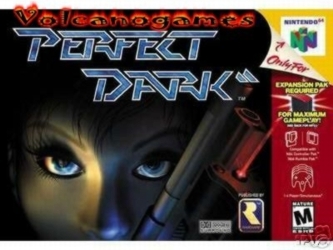
The Doom Age

As computers began to advance, and processors became more potent, drawing 3-D graphics in real time was no longer a dream of the future. ID Software's legendary breakout game, Wolfenstein 3D, released in 1992, changed video games forever. Running on DOS, it revolutionized the PC gaming world. The game was based during World War II, and was one of the first games where players were firing at humans, rather than aliens.In Wolfenstein 3D, the player is an American soldier named BJ Blazkowicz attempting to escape from a Nazi stronghold; there are many armed guards, as well as attack dogs. The building has a number of hidden rooms containing various treasures, food supplies, and medical kits, as well as three different types of guns and ammunition.
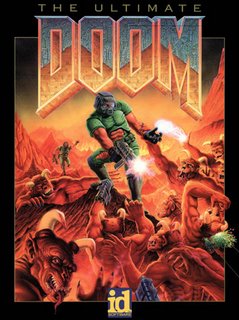
Doom, released in 1993, is widely recognized for its pioneering use of immersive 3D graphics, networked multiplayer gaming, on the PC platform, and the support for players to create custom expansions (WADs). Distributed as shareware, Doom was downloaded by an estimated 10 million people within two years, popularizing the mode of gameplay and spawning the gaming subculture. This game was incredible. The player takes the role of a nameless space marine ("Doomguy"), "one of Earth's toughest, hardened in combat and trained for action", who has been deported to Mars for assaulting a senior officer when ordered to kill unarmed civilians. He is forced to work for the Union Aerospace Corporation (UAC), a military-industrial conglomerate that is performing secret experiments with teleportation between the moons of Mars, Phobos, and Deimos. Suddenly, something goes wrong and creatures from Hell come out of the teleportation gates, or "Gateways". A defensive response from base security fails to halt the invasion, and the bases quickly get overrun by demons; all personnel are killed or turned into zombies. At the same time, Deimos vanishes entirely. A UAC team from Mars is sent to Phobos to investigate the incident, but soon radio contact ceases and only one human is left alive — the player, whose task is to make it out alive.

These games are revolutionary because for the first time the player was able to play the game literally through the eyes of the character. These games sparked countless imitations and spin-offs ("Doom Clones"), including The Duke Nukem Series and The Quake Series, among many others.
Star Raiders (1979)
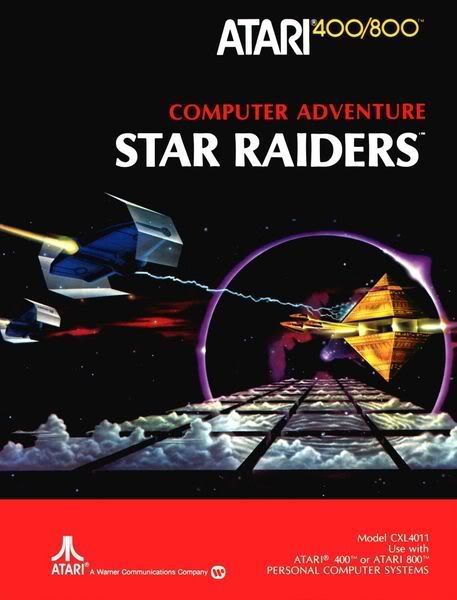
The game puts the player in the cockpit of a starship hunting aliens (surprise) throughout different quadrants of the galaxy and defending friendly starbases. What separates this game from the countless other alien-killing games throughout this period is its first-person perspective and advanced graphics.

There are multiple visual modes, including the cockpit view shown above, the galactic chart, which is a sort of map which displays the locations of ships and starbases, and the long range sector scan, which is a view of the player's ship from above.
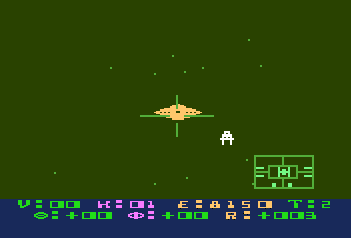
The player is responsible for strategically planning his attack on the Zylons and defense of the friendly starbases. The player uses the hyperspace function to travel between quadrants.
Monday
Defender (1980)

Defender was released in 1980 by Williams entertainment and was developed by Eugene Jarvis, who thought up the gameplay in a dream. In this side-scrolling arcade shooter, the player controlled a small spaceship navigating a mountainous landscape.
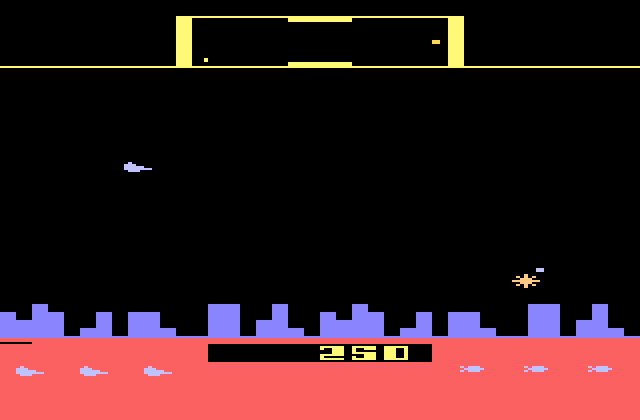
The player is armed with a beam cannon, which can be fired rapidly, and a limited supply of smart bombs (three when the game starts), which eliminate all enemies on the screen. There is also a hyperspace button which transports the player to a random position on the level. At the top of the screen is a radar-like scanner display, showing the positions of enemies and stray humans. There are six different types of aliens, each possessing a particular skill.
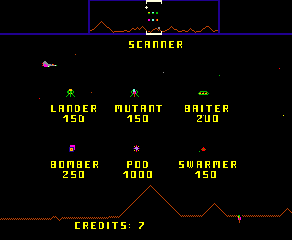
Defender was first run on Intel's 8080, and was also made available on multiple early home video game consoles, including Atari 2600, Atari 5200, CalecoVision, and Commodore 64. It can also be found in compilations of classic arcade games.
Space Invaders (1978)
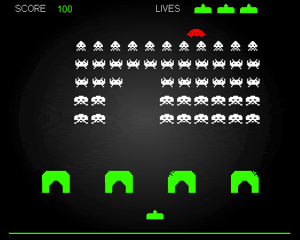
It's an invasion! Aliens are attacking Earth in scores and you and your laser cannon are the last line of defense! The game is said to have been inspired by H.G. Wells' classic science fiction novel, War of the Worlds.
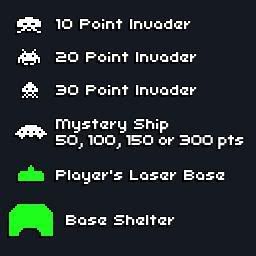
At the start of the game, several rows of aliens begin to decend the screen from the top. The object of the game is to eliminate all aliens without being hit before they reach the bottom of the screen. As you begin to mow them down, and there are fewer aliens remiaining, the invaders gradually decend faster. When the player's laser cannon is destroyed three times, the game is over.
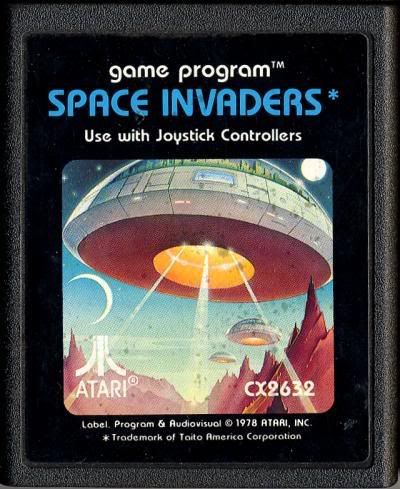
This game ran on Intel's 8080, an 8-bit processor running at 2MHz. It was one of the most successful arcade games ever released, and was also released for the Atari 2600 in 1980, putting Atari home consloles on the map.
Wednesday
The First-Person Shooter
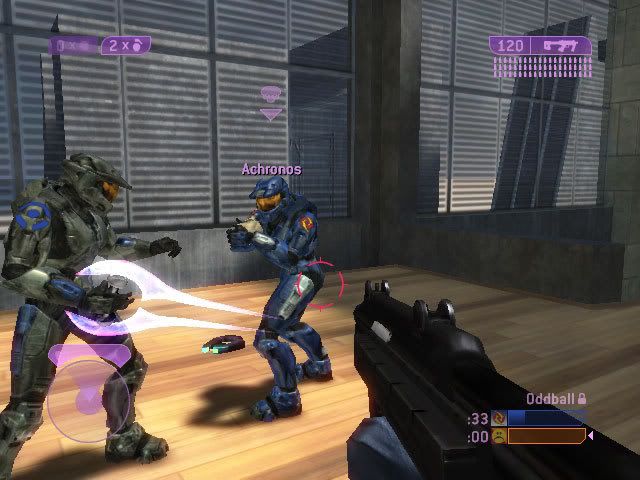
In my case study, i will explore the history of video games from the perspective of the evolution of the first-person shooter (FPS) genre of gaming tracing back to its birth in the late 1970s. This is a genre which is constantly teeming with potential, as there are frequent advances in progamming and the processing power of video-game consoles. There are many notable titles which introduced new concepts in gaming which have been emulated (literally and figuratively) by programmers around the world. The next most realistic armed combat experience, next to paintball (and other actual armed combat) is an online FPS.

Space Invaders (1978)

Defender (1980)
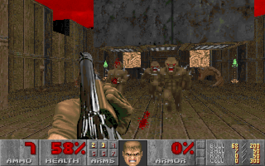
Doom II (1994)
i've been a fan of the genre since i first played doom 2 for windows 95, but the spirit of the first-person shooter has been alive since the early 1980's in arcade games like space invaders and defender, and early computer games like battlezone, star raiders, and catacomb 3D. this weblog will trace the development of the FPS genre from its roots of yesteryear to its blossoms of today over four definitive periods.

Star Raiders (1979)
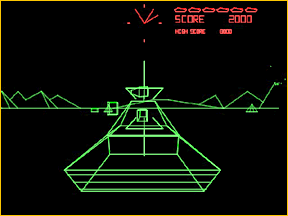
Battlezone (1980)
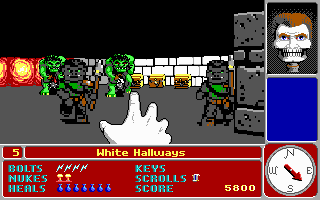
Catacomb 3D (1991)
The first period, which will be referred to as Early Games (1978-1987) consists of early arcade and Atari home video games that introduced the shooting perspective, the precursors to the modern first person shooter. These games include Space Invaders, Star Raiders, Defender, Battlezone, 3D Deathchase, 3 Demon, Driller, and MIDI Maze (Faceball 2000).
The second period, The Doom Age (1990-1995), traces the early 1990s and the games that defined the First Person Shooting genre. Computers were now powerful enough to draw three-dimensional graphics in real-time, creating mildly realistic 3D effects, giving the player more freedom and control when moving his character, and more challenging enemies. These groundbreaking games include Terminator 2: Judgement Day, Doom, Wolfenstein 3D, Doom II, (etc.).
The third period, which I'll call The Goldeneye 007 Age, represents the first growth spurt of sorts within the genre. This is when first-person shooting games became more than just "Doom clones" and many different games began to take flight on PC and Nintendo 64. Arcade shooters also became very advanced in this period.
The period with the most to write about will be the The Next Generation, which will deal with all major developments in the genre since the year 2000. This includes modern arcade shooters, hunting simulators, notable Sega Dreamcast titles (The House of the Dead), modern PC shooters (UnReal, The Call of Duty series, CounterStrike) Playstation 2 (The TimeSplitters Series, Killzone, Black) and Xbox (The Halo Series, Doom 3, Star Wars: Battlefront) titles, and some of the new games being released for the Xbox 360, Playstation 3, and Nintendo Wii.


